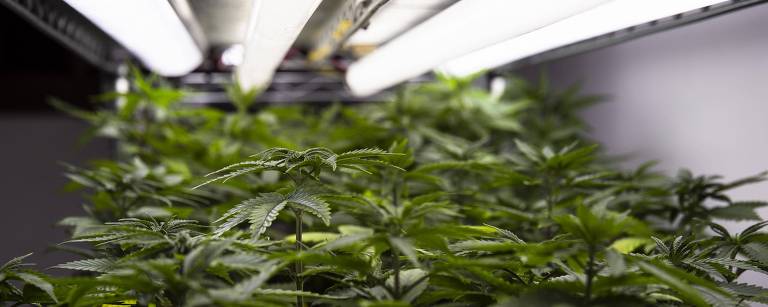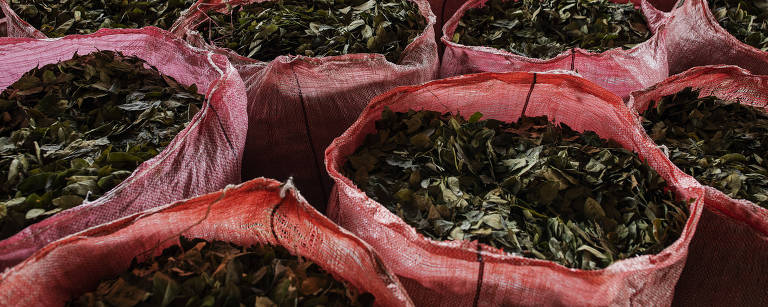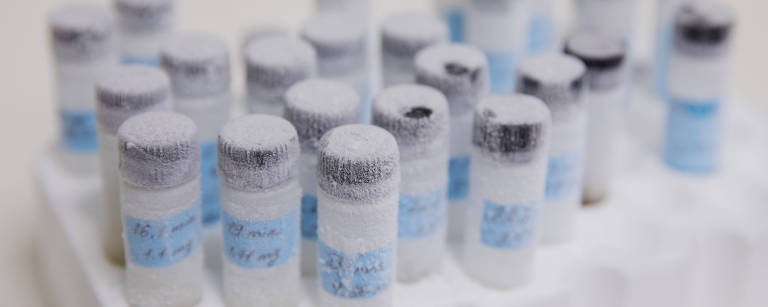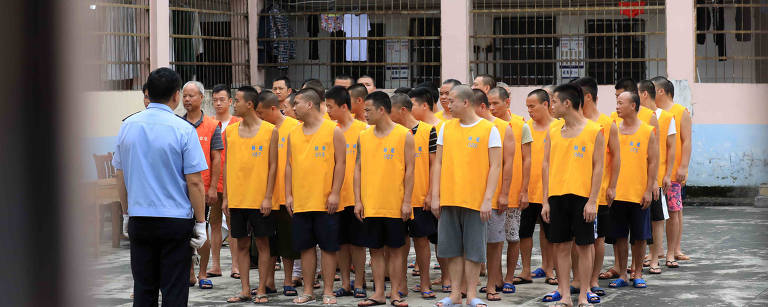
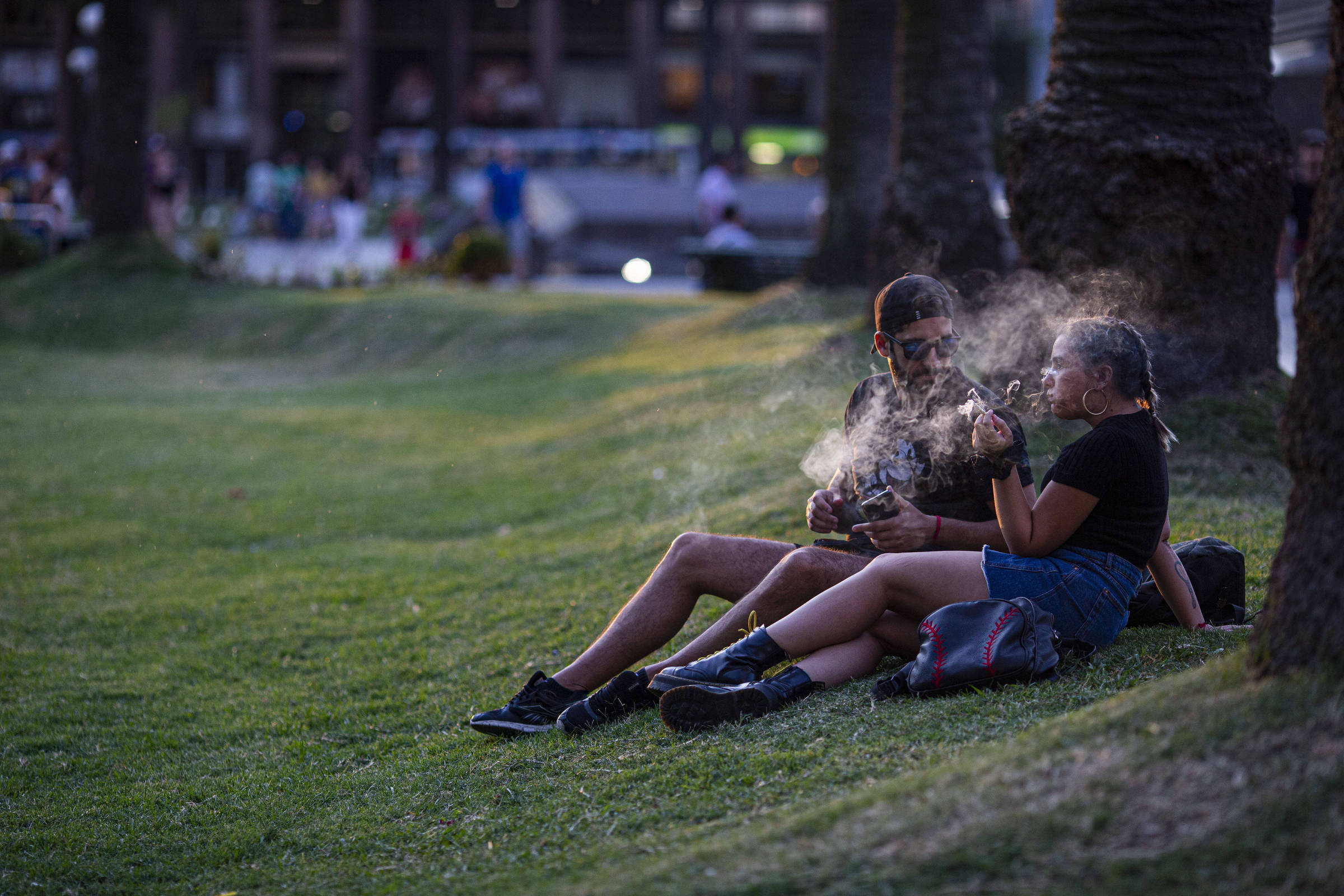
Young people smoke marijuana in Independencia square, in Montevideo - Danilo Verpa/Folhapress
It’s a late summer afternoon one month before the coronavirus pandemic started in Latin America. In the green squares of Rodó Park, in front of the “rambla” (boardwalk), next to the River Plate, there are groups of young people, middle-aged people, elderly couples. They drink mate, talk, flirt, while children run and roll barefoot on the lawn.
Here and there, you can smell the unmistakable waft of marijuana –groups and couples are smoking it. There are no police officers. Nor is it clear whether people are bothered by their absence. The scene looks as natural as sitting on the short wall to watch the sunset.
“I grow marijuana at home. I don’t buy it at the pharmacy, because I think what the government sells is very weak. I like the law because I don’t have to look for a dealer. I spend an hour a day taking care of my plants, and this is a therapeutic activity, it relaxes me and gives me pleasure,” said a user interviewed by Folha, there with his girlfriend.
At first glance, Uruguay appears to be the postcard nation for the legalization of marijuana, in force in the country since 2013. The country’s marijuana law is a mixed bag, however.
While some aspects, such as the production of ingredients for plant-based remedies, evolve rapidly, others still need improvements, such as user control and stabilization of demand by users and foreigners.
Foreigners disembark from cruises in the port of Montevideo or arrive at airports asking for drugs. They soon become an easy target for drug traffickers in the alleys near the port or at the entrance of hotels.
The 2013 legislation expanded another legislation from 1971, which allows any citizen to carry, in small quantities and for their own consumption, any illicit substance. The text also applies to other drugs like cocaine and heroin.
In 2013, however, under the administration of José “Pepe” Mujica and the “Broad Front” left-wing coalition of political parties, the government created more comprehensive legislation.
The legislation’s text says the State is responsible for planting, producing, storing, distributing, and selling marijuana. To have access, you must register with the Ministry of Health and be Uruguayan or have a permanent residence document.
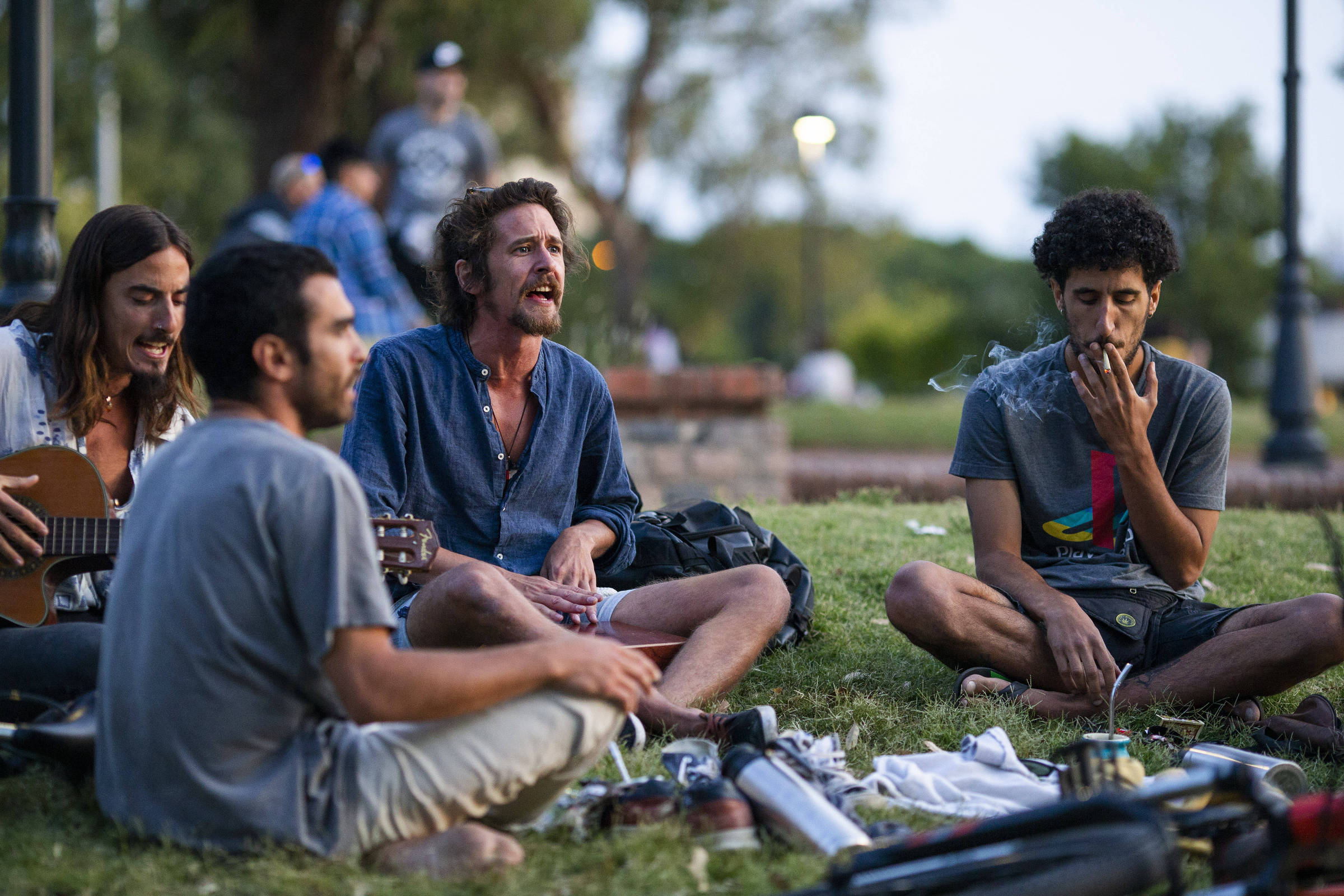
Young people smoke pot in Rodó park, in Montevideo - Danilo Verpa/Folhapress
You can buy marijuana at only 17 pharmacies in the country. The maximum amount is 40 g per month, 10 g per week. Production and distribution were not interrupted during the pandemic.
The State, however, is unable to produce enough for those who wish to buy in pharmacies. Only two companies have obtained a license to produce, one Uruguayan and one Canadian, and the quantity does not meet demand.
“Packages run out in a matter of seconds when they arrive,” says Sérgio Redin, 56, responsible for the Antártida pharmacy. To avoid the queues that formed in the beginning, establishments started to make reservations online.
“It is difficult to buy. For each reservation, we need to keep insisting on more than one pharmacy until we get it,” says Nahum Martínez, 19, who came to pick up his packages at the pharmacy.
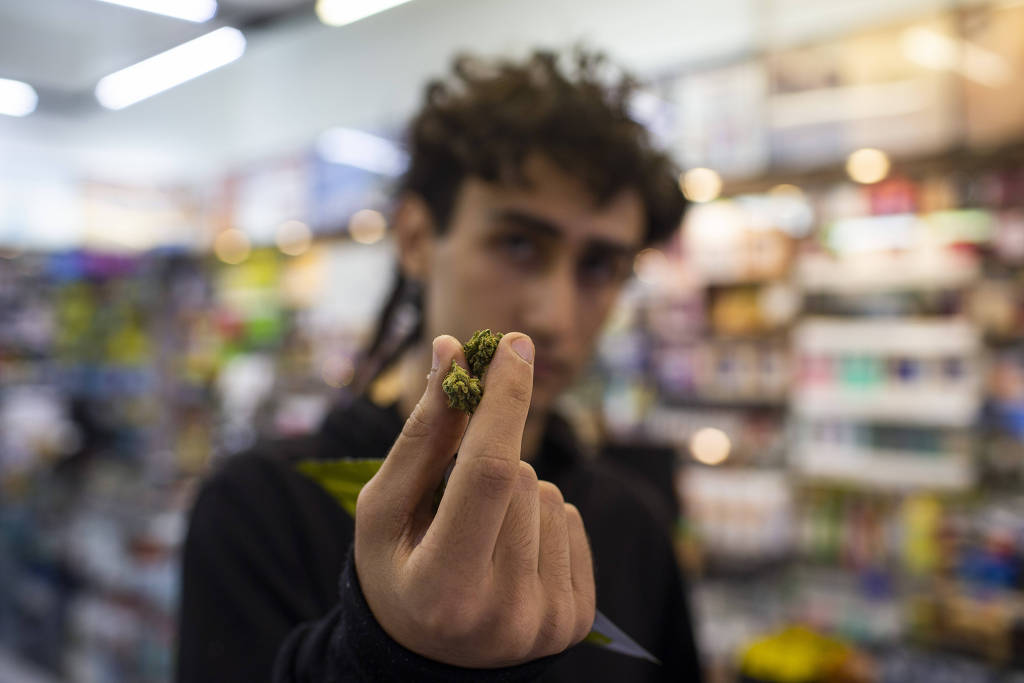
Nahum Martínez, 19, shows cannabis he bought in a pharmacy in downtown Montevideo - Danilo Verpa/Folhapress
Pharmacies distribute two types of cannabis, Cannabis indica or Cannabis sativa. “I use the indica when I want to relax, and the sativa when I want to be more creative, write or draw,” says Martínez, who works at a bakery.
In one of the pharmacies that Folha visited, the pharmacist’s irritation was visible. “I don’t know why this is still an issue. The phone keeps ringing, everyone comes in here to ask, everyone is tired of knowing how it works, what else can I say?”, he says, practically shooing away the reporters from the place.
The marijuana law has become so well-known around the world that during the high travel season, Uruguay is filled with tourists who enter the shops of tobacco-related knickknacks –which sell rolling paper, hookahs, grinders, land for cultivation, but not marijuana– asking how and where to get the drug. Many stores even put a poster on the door or on the counter: “Marijuana is not sold here.”
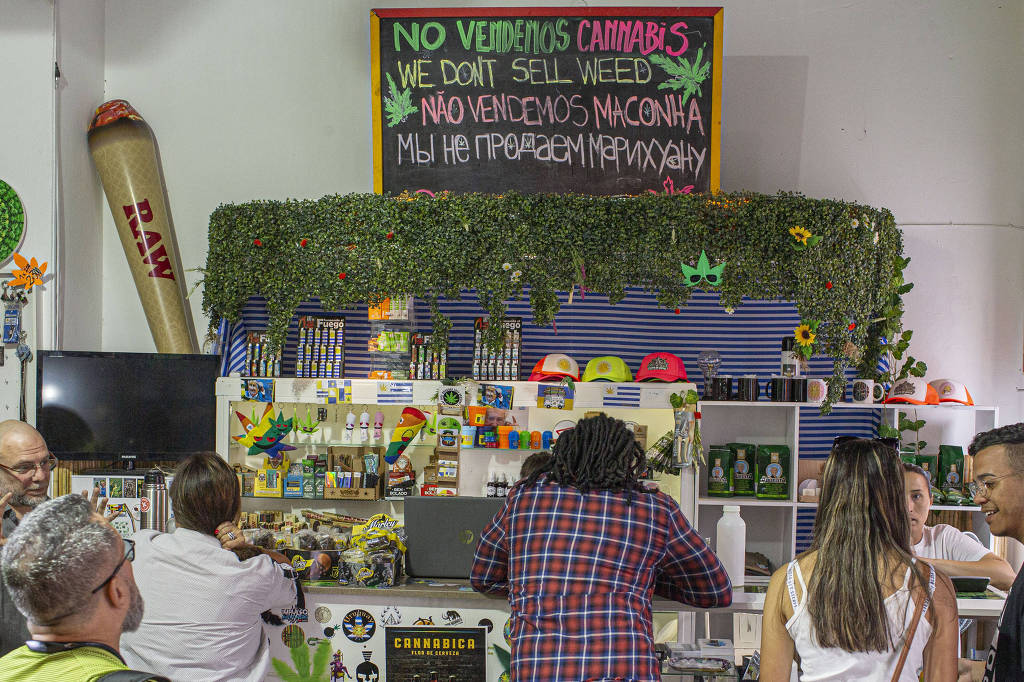
A growshop that sells pot paraphernalia in Ciudad Vieja in Montevideo - Danilo Verpa/Folhapress
“It makes no sense to restrict this from tourism. I think that a second step for this legislation is to open more sales, require less registration from users, and let the country profit from its production, develop its products,” says activist Eduardo Blasina, owner and director of the Cannabis Museum in Montevideo.
Blasina, however, believes that the law has worked. “The stigma of marijuana in society is decreasing, people are more accepting of the plant, and I believe that every democratic and humanist government will end up regulating its production and sale in some way and at some point.”
There are many restrictions, so many people try to set up businesses that are barely within the law. This is the case of the so-called cannabis chefs, who hold events or courses in private homes and prepare food made with marijuana of various origins: licit, donated, illicit, or grown by themselves.
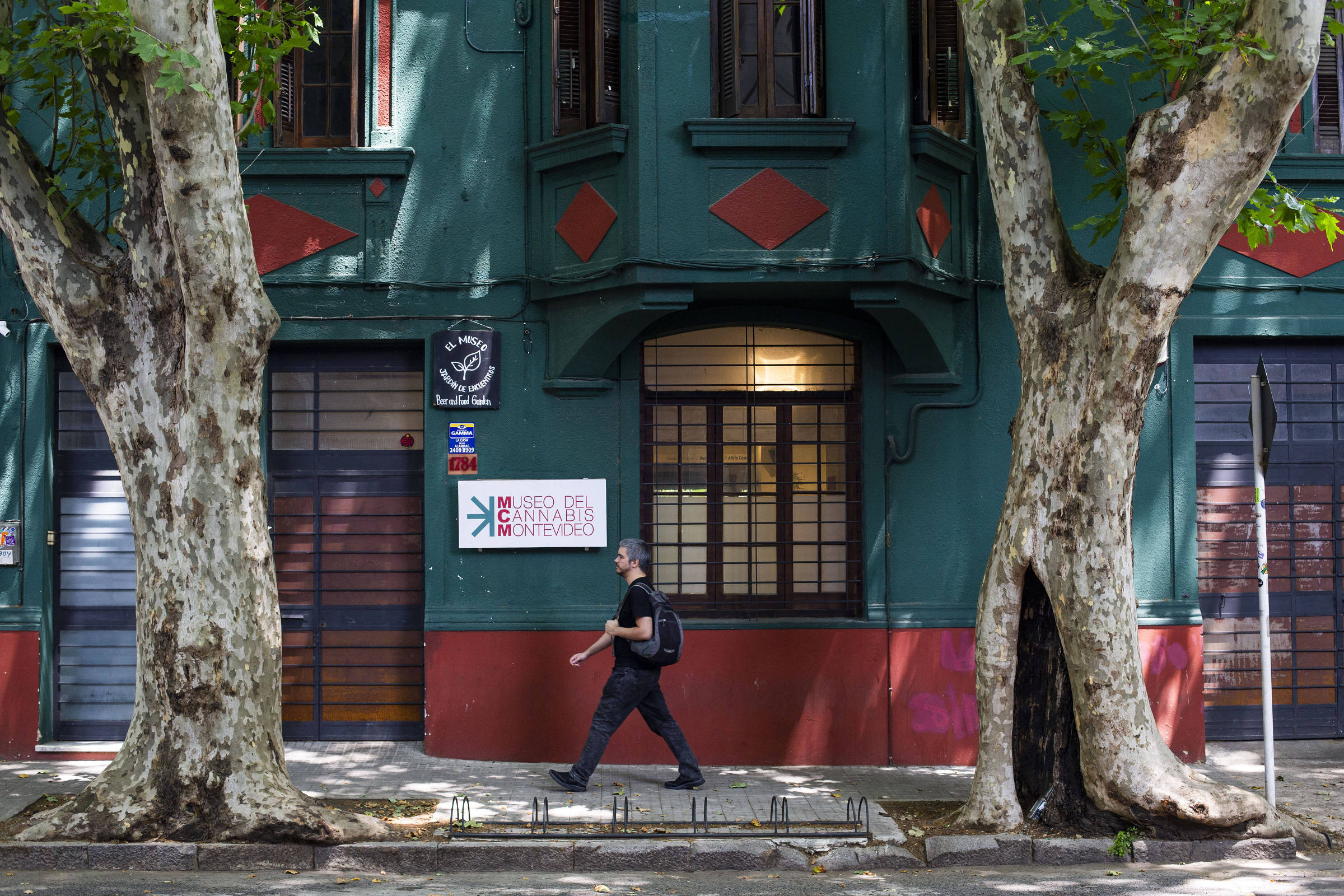
The Cannabis Museum in Montevideo - Danilo Verpa/Folhapress
One of those planning to become a professional cannabis chef is Gustavo Colombek, 29, a Brazilian who moved to Uruguay when the law was passed. “I started to learn how to cook with marijuana in Europe. I got my Uruguayan document and held events, making dishes with which the person can experience digested marijuana. But it is very delicate. You need to adjust the tone and quantity so that the person does not have a health problem because the effect is much stronger.”
For Folha, Colombek prepared a dish that he created, Chicken Sauce Smoke. It is chicken with potatoes cooked with marijuana oil. In another dish, he prepares roasted meat with an infusion of marijuana flowers.
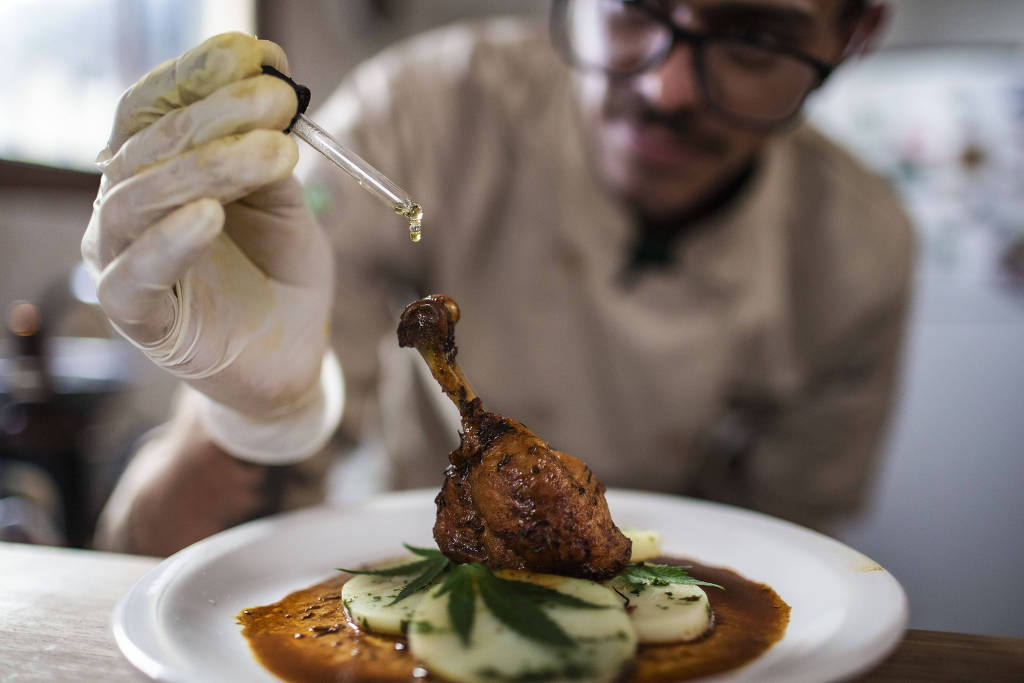
The cannabis chef Gustavo Colombek uses CBD oil in an entrée - Danilo Verpa/Folhapress
The first practices to be regulated were personal cultivation, restricted to six plants, and the cultivation clubs, in which several users come together, appoint a grower. The grower is responsible for up to 99 plants. But each member is limited to how much they can consume per month –40 g per month.
However, this is the part of the law that users like most because they can avoid pharmacies and interact with other users. There are more than 150 clubs in Uruguay, and they are inspected by the IRCCA (Cannabis Regulation and Control Institute).
Some rules involve soil quality, property security, and restriction of guests in the growing area. If the rules are broken, licenses can be lost, and plants may be destroyed.
“The law is not ideal for users, nor do I believe it was made with them in mind, but rather to develop the pharmaceutical industry, leaving some crumbs for us,” says veteran activist Alicia Castilla, whose arrest triggered the fight for the legalization of marijuana in the country. A neighbor reported her for having more than 20 plants at home.
“Now, at least, we don’t go to prison if we plant it, and the government has stopped interfering with a human right, which is to let me decide what happens inside my skin, what I want to eat or consume.”
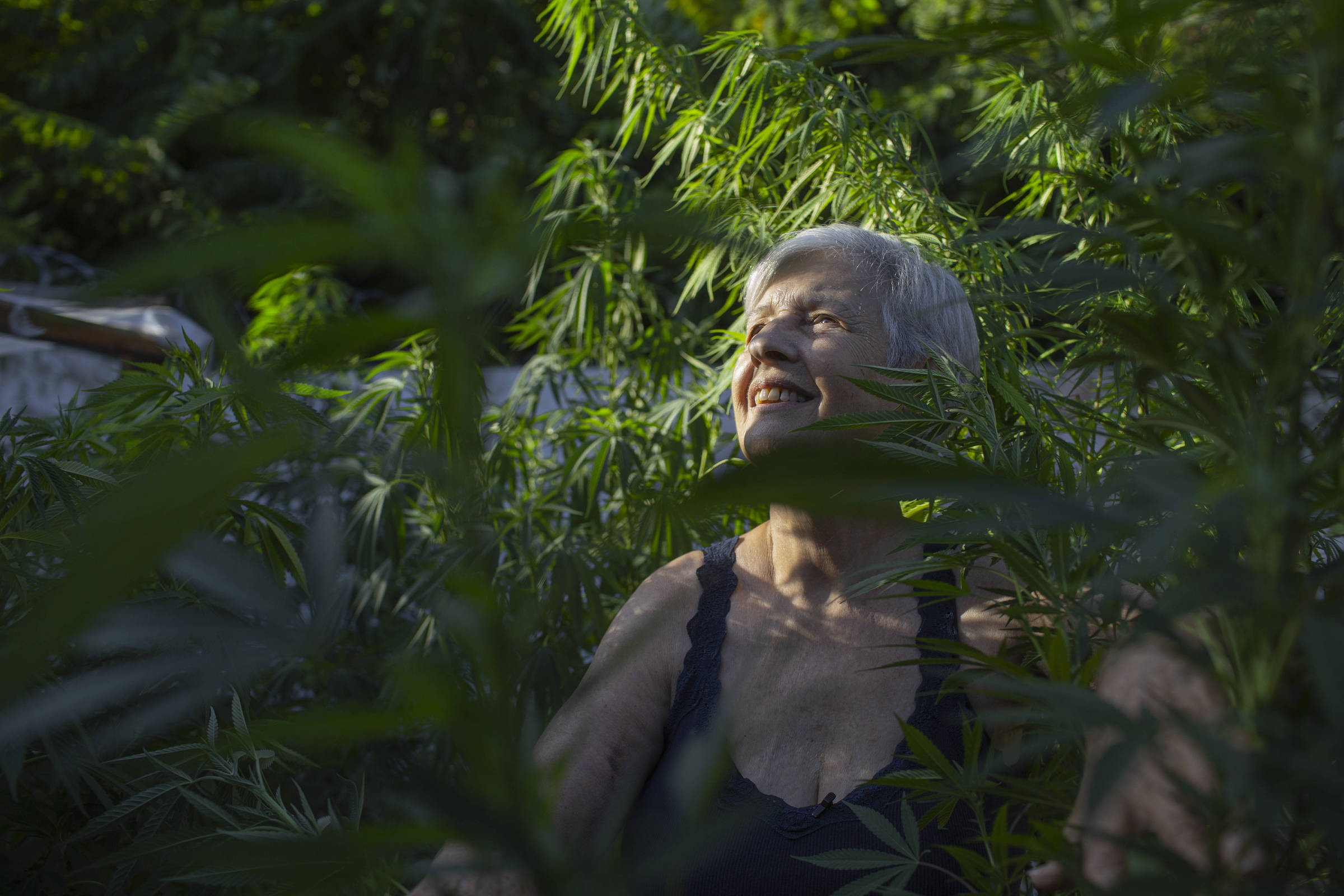
Activist Alicia Castilla in her home in the beach town of El Fortín - Danilo Verpa/Folhapress
Castilla says she would prefer a more open law, without limitations on quantity, and one in which foreigners could also buy.
But the main problem she sees is registration. “Today this information is well kept, according to the government, but what if tomorrow we have a government that decides to make this information available, sell this list? How does that look?”
Of the generation of those who resisted the Uruguayan dictatorship (1973-1985), Castilla is suspicious of lists. “In the dictatorship, they made lists too. They wanted to know names, for what? To arrest and torture us”, says the activist.
There are six large plants in a beautiful garden at Alicia’s house, a few meters from the beach. There, she also maintains the library of her husband, the intellectual Daniel Vidart (1920-2019), who participated in activism with her.
Not far away, also close to the beach, is Guillermo Amandola’s growing club. In the main house, he lives with his wife and children. In a shed, at the back, is the marijuana club. There are 99 plans surrounded by wires and lights.
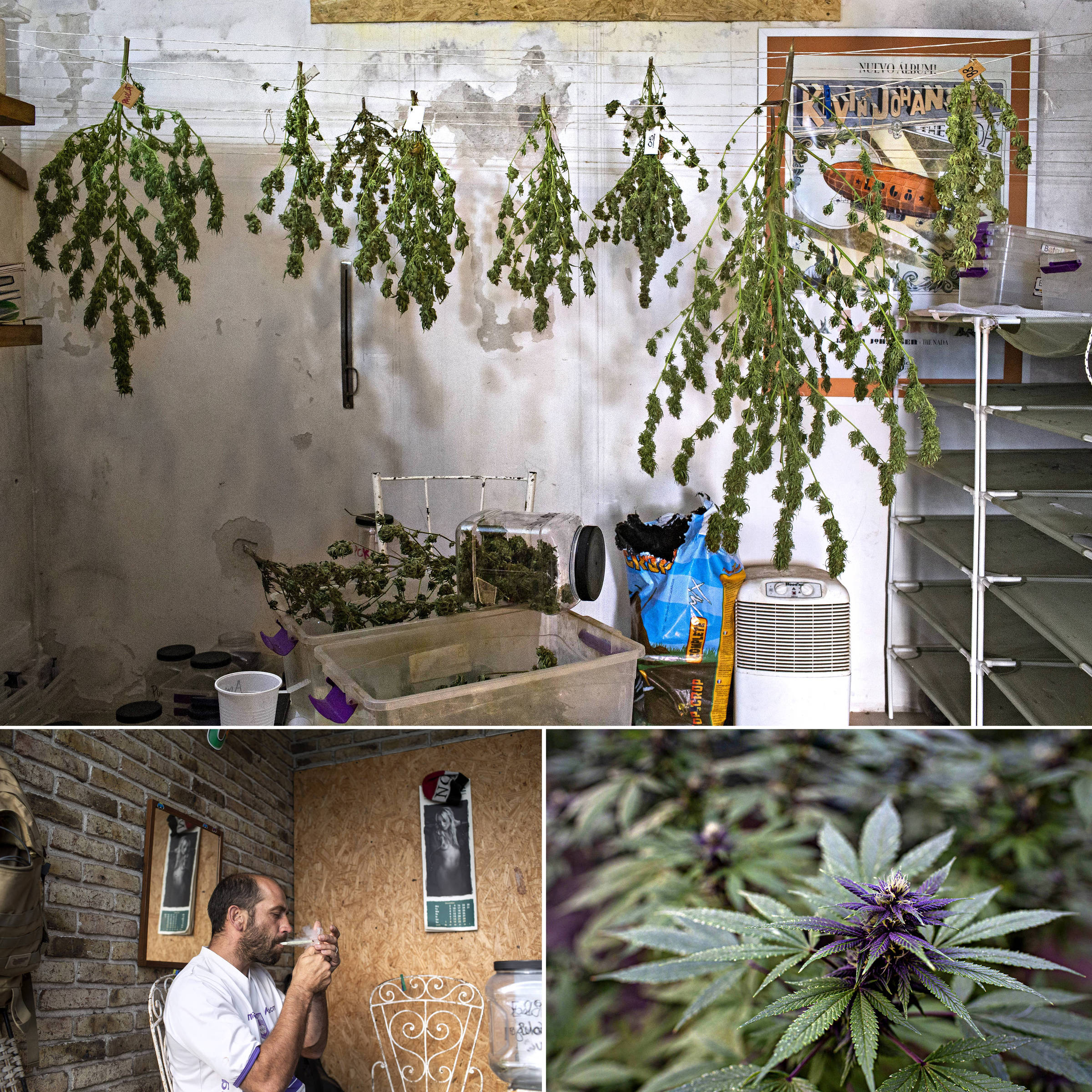
Guillermo Amandola (below) and his cultivation club near Montevideo - Danilo Verpa/Folhapress
Guillermo says that he likes manufacturing different flavors. In a room at the back, where the club members gather, there is a scale, weighing what each one can take, and a cupboard, known as a cellar. There, in pots, are the types of marijuana that each member can choose.
Amandola, however, is critical of the law. He says he believes that there was no freedom, but instead restriction.
“It’s like I’m on probation. They created a lot of rules and thereby killed activism. The idea of the plant limit is absurd, why 99? Nobody ever explained that number to me.”
Regarding users’ complaints, Martín Rodríguez, the executive director of the IRCCA, says that the program has received positive evaluations so far.
“The idea was never that of total freedom, nor of selling abroad or to foreigners. The objective was to take the business away from drug traffickers and make legislation for Uruguayan users or permanent Uruguay residents,” he says.
Rodríguez says it is good that more than 50,000 people are registered, a sign of confidence in the system. The list of users is with the Ministry of Health and is not connected to each person’s activity, he says; only with a court order is it possible to link the information.
According to the IRCCA, drug trafficking has obviously not ended, but it has decreased. Before, it was estimated that 58% of the marijuana consumed in Uruguay came from Paraguay, produced in poor conditions. The rest was from illegal local cultivation.
Now, drugs sold by dealers have dropped to 11% of the total, which means, according to the agency, that US$ 30 million (R$ 154 million) have stopped flowing to criminal factions. According to the entity, one out of every three marijuana consumers in Uruguay obtains it legally.

Young people in Zabala square, in Montevideo - Danilo Verpa/Folhapress
The relationship between sales outlets and banks remained unresolved. Most foreign banks fear dealing with establishments that sell marijuana. “For now, there is no solution. We use our imagination,” says Martínez.
In recent months, the number of companies that have obtained licenses to manufacture ingredients for medical marijuana production has increased. There are more than 70, Uruguayan and foreign, and more than 30 waiting to obtain licenses.
For now, they produce ingredients to manufacture products for different diseases: stomach disorders, epilepsy, Parkinson’s disease, side effects of chemotherapy. However, there are still no drugs manufactured entirely in Uruguay. These companies export to countries with regulated pharmaceutical industries; many of the products then come back to be sold in Uruguay.
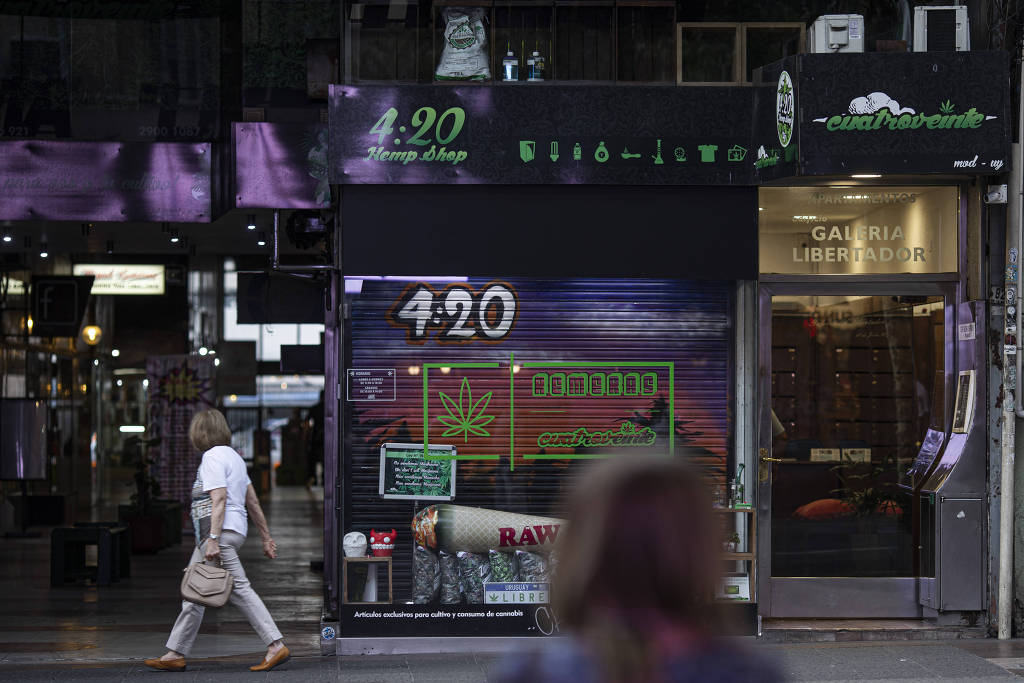
A growshop in 18 de Julio Avenue in Montevideo - Danilo Verpa/Folhapress
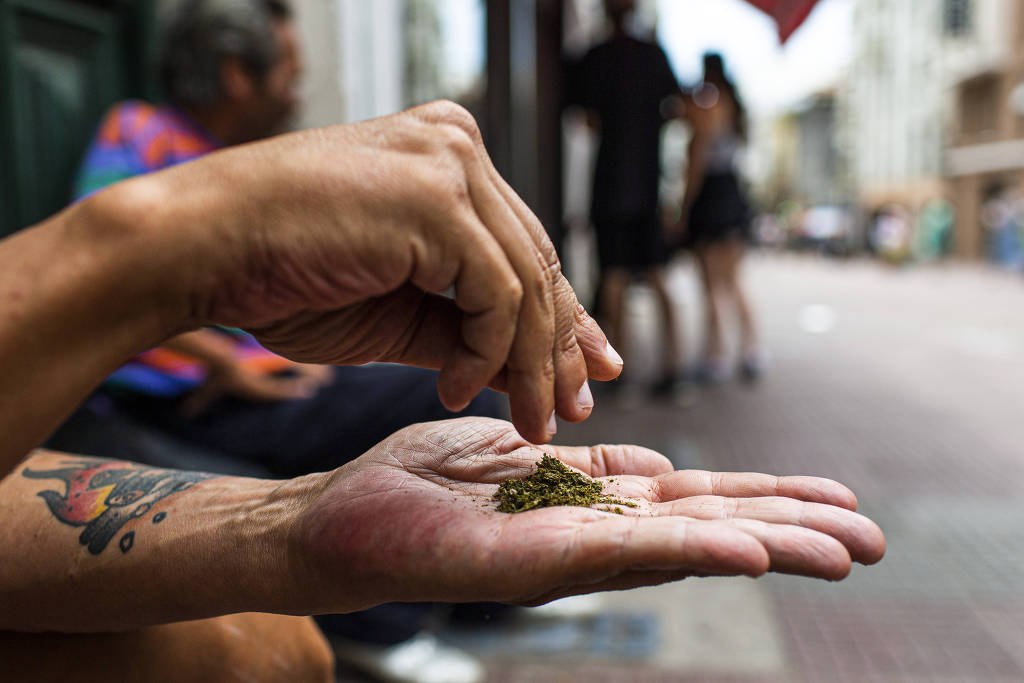
A man rolls a blunt in Ciudad Vieja in Montevideo - Danilo Verpa/Folhapress
State recreational marijuana is grown in a single location, a greenhouse building maintained by two companies, one Uruguayan-Spanish, and one Canadian. The site is under construction to receive three new foreign companiees, which is expected to solve the shortage of product in pharmacies.
There are gigantic plantations, but these belong to foreign companies that have obtained a license to produce medical marijuana.
Folha visited the American company Fotmer, one of the largest and the first to obtain an Uruguay license, and which has more than 20 greenhouses lined up. Within them, there is only the noise of ventilation and the gentle steps of the workers who monitor the plants, identify diseases, eliminate those that are not developing satisfactorily, and record each one’s evolution.
Fotmer launched in Colorado, but its CEO, Jordan Lewis, says he is very excited about Uruguay’s possibilities. According to him, the company’s goal is to create an industry of US$ 1 billion (more than R$ 5 billion) in the next five to seven years.
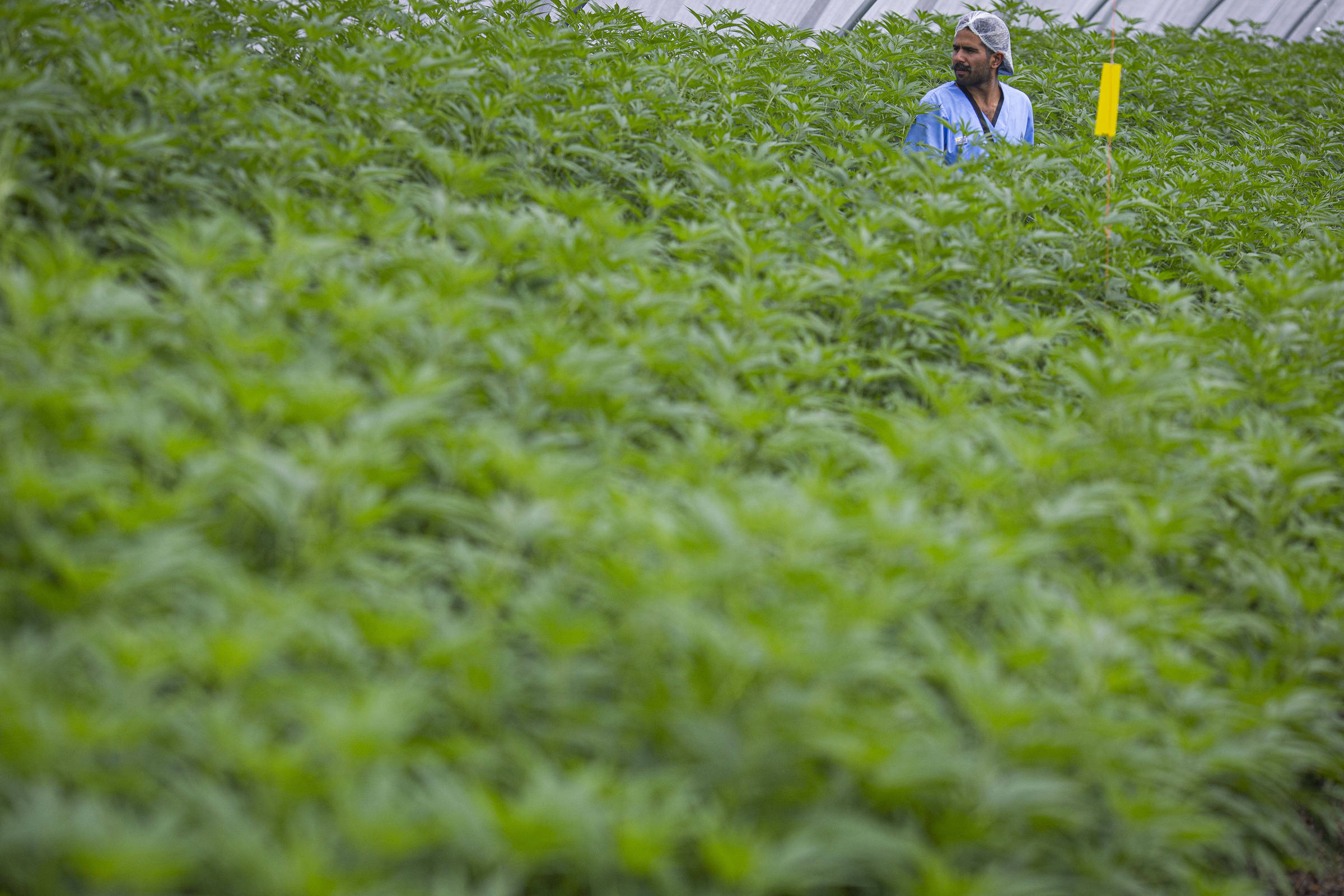
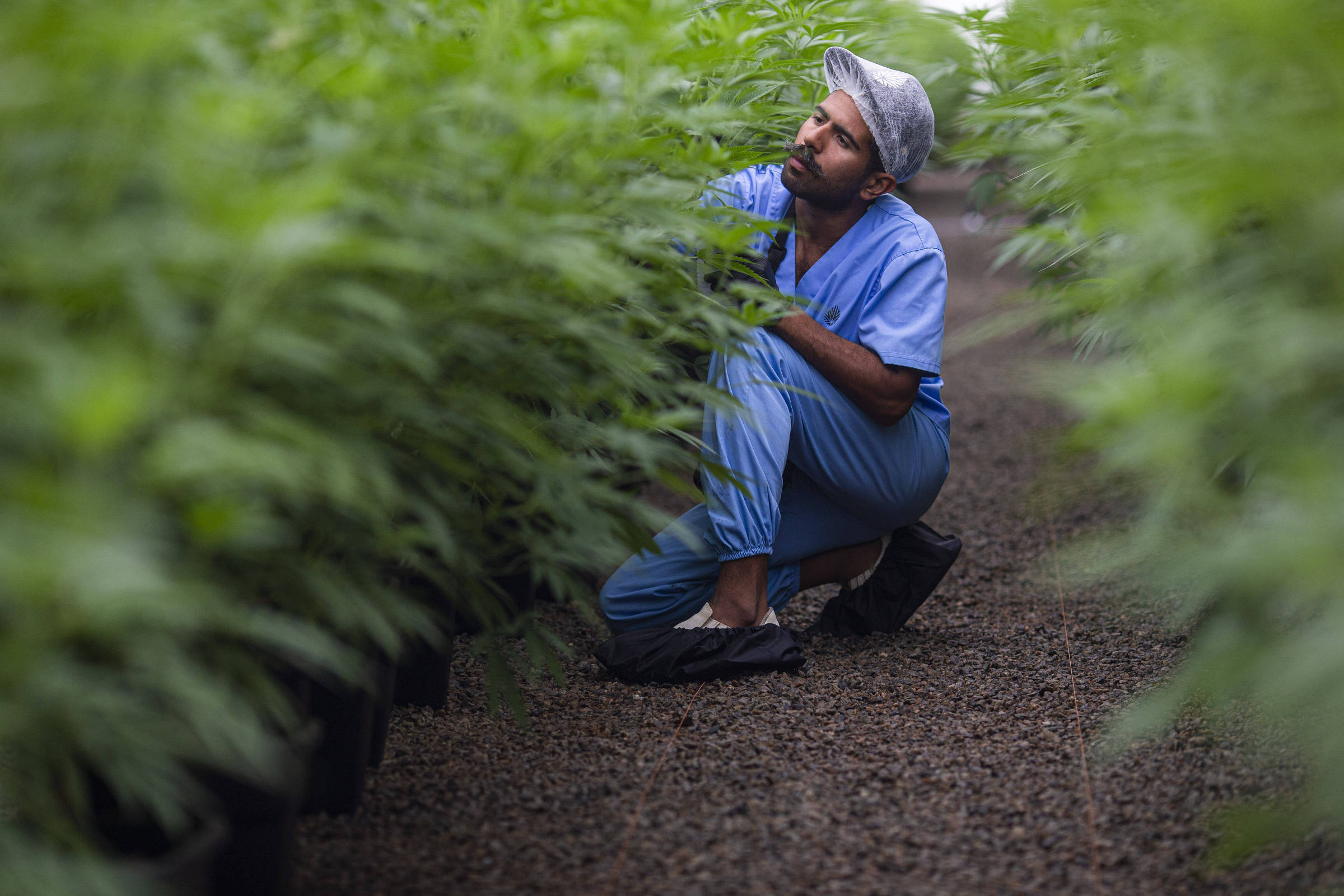
Fotmer"s marijuana grow in the city of Colonia - Danilo Verpa/Folhapress
There are two properties occupied by the company in free zones in the country. One, near Carrasco airport, houses the mother plants, chosen from the best available by Uruguayan and American scientists. The second site, near Colonia, is where the complete cycle occurs and where the laboratory is located.
Fotmer exports about 100 kg of marijuana flowers and extracts per month and the main destinations are laboratories in Europe and the USA that produce medicines.
Doctors say there is a lack of research on medical marijuana. According to scholars interviewed by Folha, there are only three cases in which medicinal cannabis is proven effective: epilepsy (using only the plant’s CBD), neuropathic or chronic pain, and relief of digestive symptoms from chemotherapy (CBD with low THC content).
Neurologist Gustavo González sees the Uruguayan system as a good experiment but says there should be more research before building so much structure to produce drugs.
Folha used marijuana from pharmacies and agreed with what users said: it is very weak. Marijuana made at home by experienced users and with appropriate techniques is much better and produces more pleasurable effects. Consumers agree, however, that both state and artisanal marijuana in Uruguay are better than Paraguayan product.
When the law came into force, government surveys showed that 66% of Uruguayans rejected it; today, 61% are in favor.
Since March 2020, Uruguay has had a new government, the center-right Luis Lacalle Pou, but nothing has changed regarding the legislation. Since his campaign, Lacalle Pou has said that he would not attempt to change civil rights laws passed during the government of the Broad Front –such as marijuana, abortion, and gay marriage.
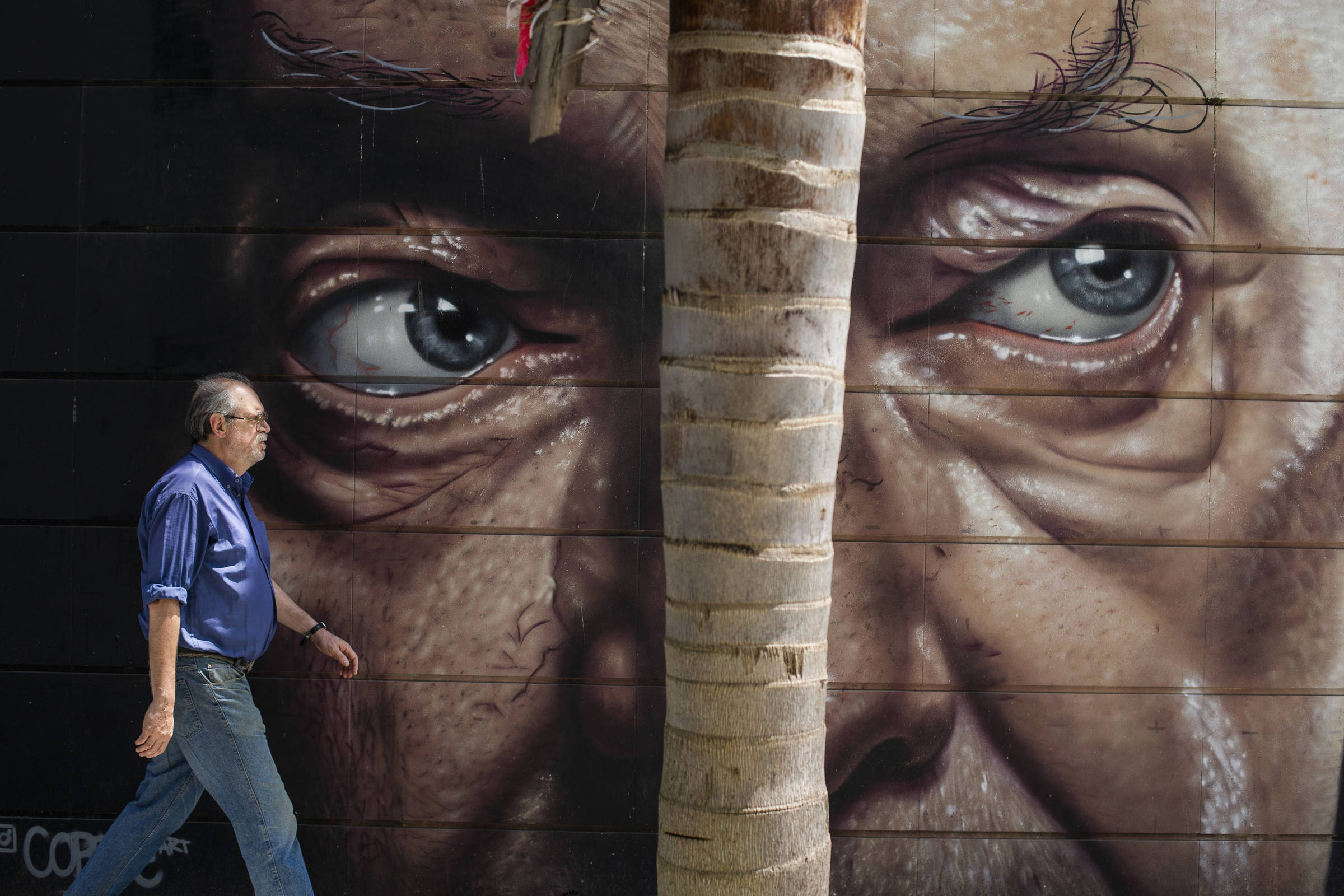
A graffiti of writer Eduardo Galeano in Montevideo - Danilo Verpa/Folhapress
Uruguay’s marijuana law
Source: IRCCA
